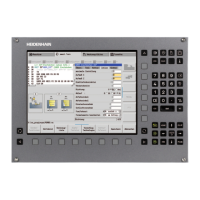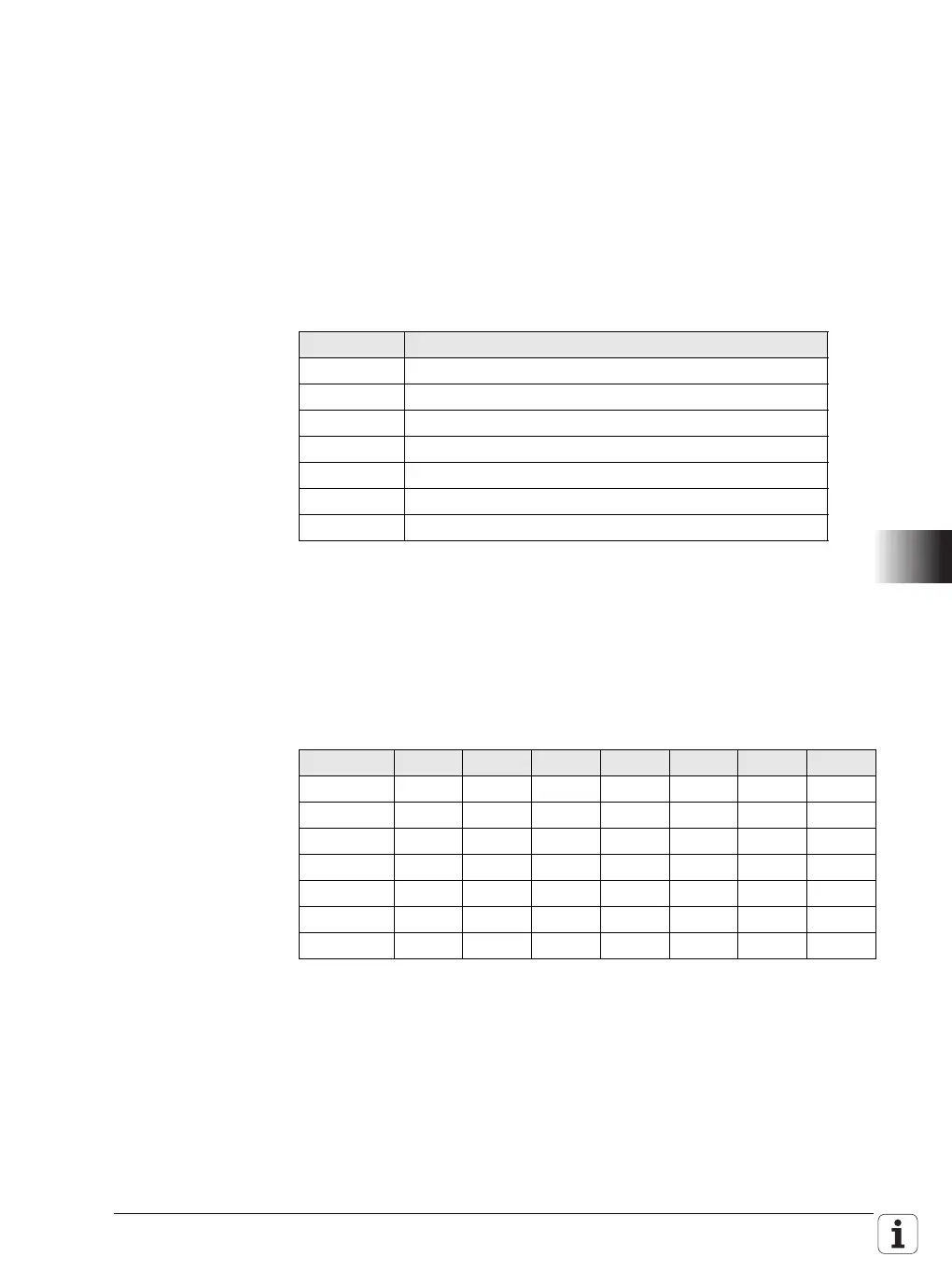January 2012 9.7 Data Transmission Protocols 1785
9.7.2 Communications protocol with block check character
This protocol is specific to HEIDENHAIN and operates with its own control
characters and an additional data check feature when transmitting.
The protocol is active during blockwise data transfer in FE1 mode, see page
1780.
In FE1 mode, a command sequence is output at the beginning to request the
contents directory from the peripheral device.
Header When a file is transferred, the first block—called the header—consists of the
following characters:
<SOH><K><Name><M><ETB><BCC><DC1>
Block Check
Character (BCC)
In addition to checking the parity of the individual characters, the parity of the
complete transferred block is also checked. The BCC always rounds the
individual bits of the transferred characters in a data transfer block to even
parity.
Example of BCC generation:
In this example, program 15, which has been written in HEIDENHAIN plain-
language text (H), is input through the data interface (E).
A parity bit is also generated for the BCC. With even parity, the parity bit in this
example is assigned the value 1.
Character Meaning
<SOH> Identifies the beginning of the header
<K> File code
<Name> File name
<M> Data transfer mode (E = input, A = output)
<ETB> Identifies the end of the header
<BCC> Block Check Character
<DC1> XON
Character Bit 6 Bit 5 Bit 4 Bit 3 Bit 2 Bit 1 Bit 0
SOH0000001
H 1001000
1 0110001
5 0110101
E 1000101
ETB 0010111
BCC0011111

